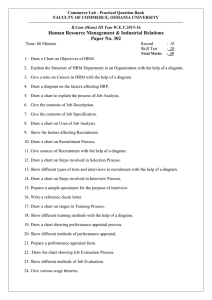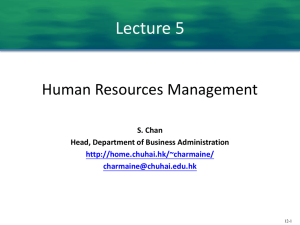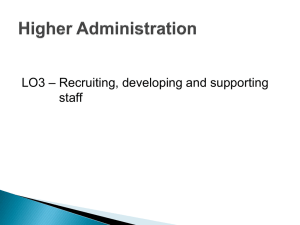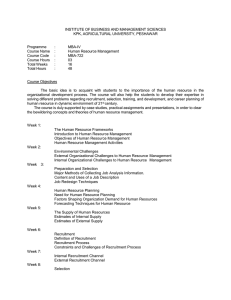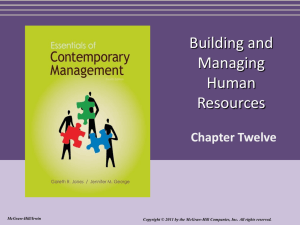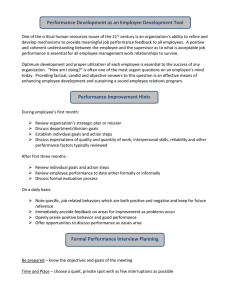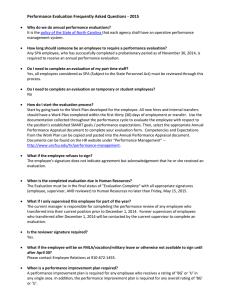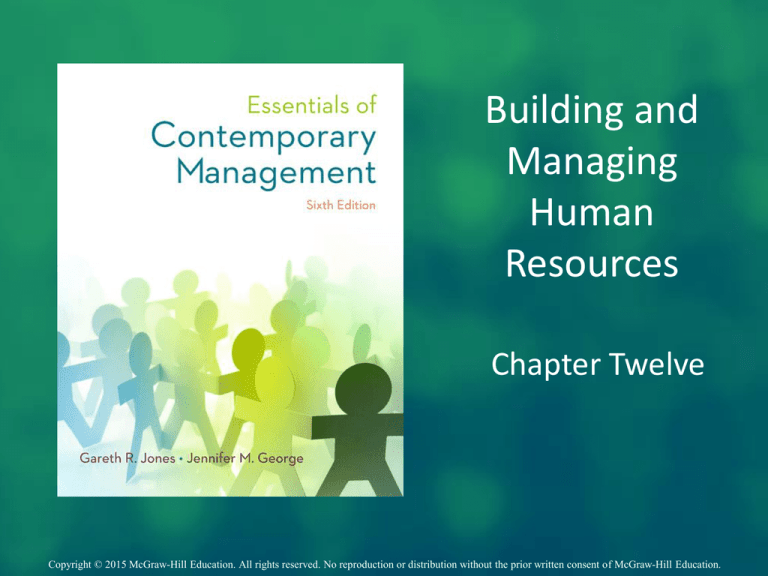
Building and
Managing
Human
Resources
Chapter Twelve
Copyright © 2015 McGraw-Hill Education. All rights reserved. No reproduction or distribution without the prior written consent of McGraw-Hill Education. 12-1
Learning Objectives
LO12-1 Explain why strategic human resource
management can help an organization gain a
competitive advantage.
LO12-2 Describe the steps managers take to recruit and
select organizational members.
LO12-3 Discuss the training and development options
that ensure organization members can
effectively perform their jobs.
12-2
Learning Objectives (cont.)
LO12-4 Explain why performance appraisal and
feedback is such a crucial activity, and list the
choices managers must make in designing
effective performance appraisal and feedback
procedures.
LO12-5 Explain the issues managers face in determining
in determining levels of pay and benefits
LO12-6 Understand the role that labor relations play in
the effective management of human resources
12-3
Strategic Human Resource
Management
Human Resource Management (HRM)
Activities that managers engage in to attract and
retain employees and to ensure that they perform
at a high
level and contribute
to the accomplishment
of organizational goals.
12-4
Components of a Human Resource
Management System
Figure 12.1
12-5
Recruitment and Selection
Recruitment
Activities that
managers engage in
to develop a pool of
candidates for open
positions.
Selection
The process that
managers use to
determine the
relative qualifications
of job applicants and
their potential for
performing well in a
particular job.
12-6
Human Resource Planning
Human Resource Planning (HRP)
Activities that managers engage in to forecast
their current and future needs for human
resources.
Demand, supply
forecast
12-7
Job Analysis
Job Analysis
Identifying the tasks, duties and responsibilities
that make up a job and the knowledge, skills, and
abilities needed to perform the job.
Should be done for each job in the organization.
12-8
Selection Tools
Figure 12.3
12-9
Training and Development
Training
Teaching organizational members how to perform
current jobs and helping them to acquire the
knowledge and skills they need to be effective
performers.
Development
Building the knowledge and skills of
organizational members to enable them to take
on new responsibilities and challenges.
12-10
Training and Development
Needs Assessment
An assessment of
which employees
need training or
development and
what
type of skills or
knowledge
they need to acquire.
12-11
Training and Development
Figure 12.4
12-12
Performance Appraisal
and Feedback
Performance Appraisal
The evaluation of employees’ job performance
and contributions to their organization.
Traits, behaviors, results
12-13
Labor Relations
Labor Relations
The activities managers engage in to ensure they
have effective working relationships with the
labor unions that represent their employees
interests.
12-14
Unions
Collective bargaining
Negotiation between labor and management to
resolve conflicts and disputes about issues such
as working hours, wages, benefits, working
conditions, and
job security.
12-15

